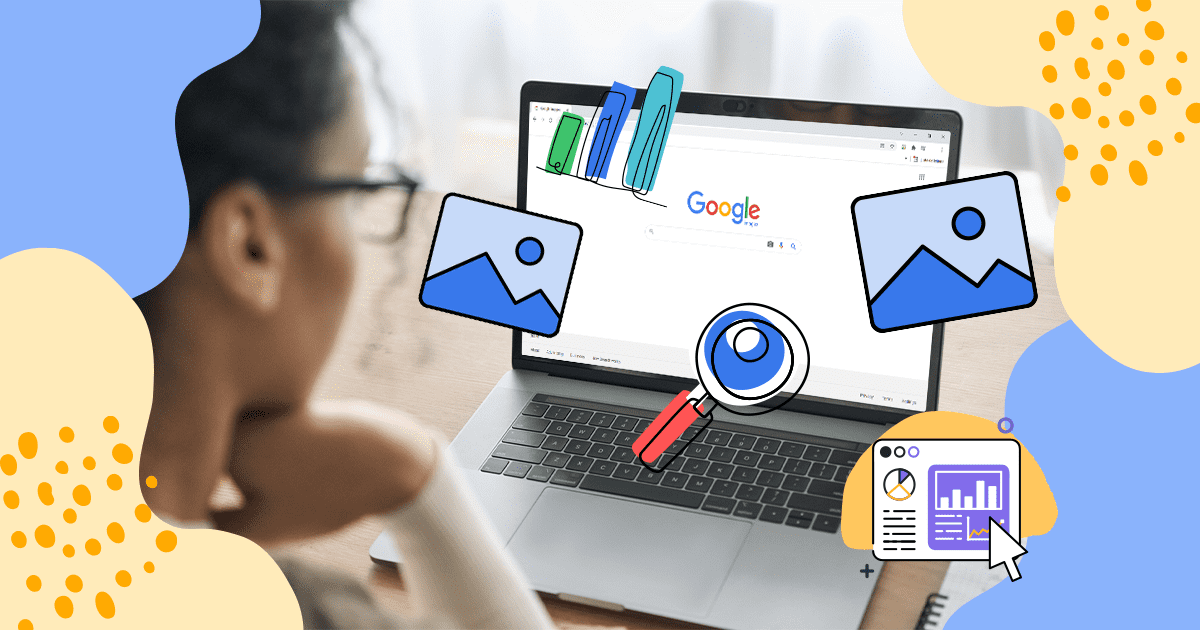Omnichannel marketing is not just a buzzword, but a necessity for any business that wants to remain relevant and competitive in a crowded market. With so much competition, you must devise efficient and effective strategies for standing out and truly connecting with your customers.
Thanks to omnichannel marketing you can cater to your customers’ preferences and needs better, and offer them convenience and personalization at every stage of their journey.
According to research, omnichannel customers shop 1.7 times more than shoppers who use a single channel, and they also spend more. Omnichannel marketing can also help you build a better relationship with your leads and customers, and improve their expectations and results with your business.
But the question is: How do you implement an omnichannel marketing strategy?
To end your struggle, I have put together a step-by-step guide to building a perfect omnichannel marketing strategy along with everything you need to know about it.
Excited to learn more? Let’s quickly dive in!
Download this post by entering your email below
What is Omnichannel Marketing?
When you engage with your customers through whatever channels they prefer—at a physical store, over the internet, via email, SMS, or social media—that’s omnichannel marketing.
It is a customer-centric approach that aims to understand how, why, and when customers use different touch points in their journey. The ultimate goal is to create a seamless and convenient user experience that offers many opportunities for fulfillment.
So why is omnichannel marketing important?
More than 50% of B2C customers use three to five channels every time they buy something or solve a problem. For instance, a typical customer who wants to book a hotel room online may switch between websites and mobile channels almost six times.
If these customers face conflicting information or don’t get the complete information they want, they may stop caring about the brand’s products or services.
On the other hand, effective omnichannel marketing can help businesses improve their brand awareness, loyalty, and revenue by providing unified and personalized communication with their customers.
Omnichannel marketing is often confused with multichannel marketing. But there is a big difference between them. Let’s take a look –
Omnichannel Marketing vs Multichannel Marketing
Omnichannel and multichannel marketing are two different ways of using multiple channels to reach and engage with customers. However, they have different goals, strategies, and outcomes.
Here is a table to help you understand the key differences between the two strategies:
| Omnichannel Marketing | Multichannel Marketing |
| Customer-centric: Focuses on providing a seamless and personalized customer experience across all channels and touchpoints. | Product-centric: Focuses on promoting the product or service through multiple channels and platforms. |
| Integrated: Connects all channels and uses unified messaging to create a consistent brand image and voice. | Isolated: Treats each channel as a separate entity and may use different messages or offers for each one. |
| Data-driven: Uses data analytics to understand customer behavior, preferences, and needs across all channels and segments. | Channel-driven: Uses channel performance metrics to optimize each channel individually. |
| Quality-oriented: Aims to increase customer satisfaction, loyalty, and retention by offering convenience and value. | Quantity-oriented: Aims to increase customer reach, awareness, and engagement by offering multiple opportunities. |
| Complex: Requires significant investment in technology, infrastructure, and organization to implement and manage. | Simple: Requires less investment in technology, infrastructure, and organization to implement and manage. |
Benefits of Omnichannel Marketing
Here are the four key aspects of using omnichannel marketing that can boost your company’s CX and conversion.
- Reducing costs of acquiring customer data: By using multiple channels to collect data from customers, businesses reduce their reliance on third-party sources or paid advertising. They can also use data analytics to segment their customers and target them more effectively.
- Obtaining valuable customer insights: By tracking the customer journey across all channels, businesses can gain a deeper understanding of their customer’s preferences, needs, behaviors, and pain points. They can also measure the performance of each channel and optimize their marketing mix accordingly.
- Attracting new market segments: By offering multiple channels for customers to interact with the brand, businesses can appeal to different types of customers who may have different preferences or needs. For example, some customers may prefer online shopping while others may prefer in-store shopping; some may want more services while others may want more convenience.
- Boosting sales: By providing consistent and integrated branding, messaging, and customer experience across all channels, businesses can increase their conversion rates and average order values. They can also increase their customer retention and loyalty by engaging them after the purchase and offering them personalized recommendations or incentives.
Steps to Building a Perfect Omnichannel Marketing Strategy
1. Research, collect, & analyze customer data
Collecting reliable data on your customers is important for the implementation of an effective omnichannel strategy. Therefore, gathering and analyzing customer data is the first and most crucial stage.
With the help of this information, you can learn when and on what platforms your target market prefers to connect with brands, what types of messages they are most likely to respond to, the kinds of features and items they are interested in, etc.
You can collect data from various sources, such as your website, social media, email, CRM, surveys, feedback, etc. You can use tools like Google Analytics, Hotjar, or QuestionPro to gather quantitative and qualitative data about your customers.
Tools like HubSpot or Salesforce are also great to manage your customer data and segment your audience based on their demographics, preferences, needs, behaviors, and pain points.
2. Create customer journey maps
The next step is to visualize your customer journey map: the path that your customers take from the first contact with your brand to the final purchase and beyond.
Let’s say you run an online fashion store. First, you need to define your customer personas. You may have “Fashionable Fiona,” a fashion-forward young professional, and “Budget-Conscious Bob,” who looks for affordable options.
Next, identify the touchpoints and channels your customers interact with. Fiona might prefer browsing your website, and social media accounts, and receiving personalized emails. Bob, on the other hand, may prefer checking out your mobile app and visiting your physical store.
Now, map out the different stages of the customer journey. Fiona’s journey may start with social media discovery, followed by website browsing, adding items to the cart, and finally making a purchase. While Bob’s journey may involve receiving a promotional email, visiting the store to try on clothes, and then completing the purchase online.
By visualizing these stages and touchpoints, you can identify pain points or gaps in the customer experience. By optimizing each touchpoint and aligning your messaging, you can ensure Fiona and Bob have a smooth and enjoyable journey, regardless of the channel they choose to interact with. This leads to higher customer satisfaction, increased brand loyalty, and ultimately, more sales.
To simplify the process you can use customer journey mapping tools like Miro, Lucidchart, Smaply, or Gliffy and create customer journey maps that show how your customers interact with your brand across different channels and devices.
3. Send highly personalized marketing messages
When it comes to marketing be it of any type, personalization plays a crucial role in driving success. You must understand your customers’ preferences and effectively communicate with them which requires proper segmentation, and tailored messages with proper CTAs.
You can create dynamic segments that adapt based on where customers are in their journey. For instance, you can identify customers who haven’t made a purchase in the last 30 days and engage them with relevant messages and enticing offers.
Utilizing data on their preferred communication channels, you can deliver the right message through the most effective channel, increasing the likelihood of conversion.
Also, ensure that the messaging, branding, and overall customer experience align seamlessly, whether customers engage with your brand through your website, social media, mobile app, or physical stores. This consistency fosters trust and a cohesive brand image, reinforcing the omnichannel experience.
4. Optimize for mobile
Next comes optimization and in this digital era people are looking for everything they want on their mobiles. This makes making your marketing tactics and brand’s presence mobile-friendly.
Mobile optimization involves designing responsive websites, user-friendly mobile apps, and streamlined checkout processes for smaller screens. By doing so, you provide a seamless experience for customers transitioning between different channels, such as browsing on a desktop and making a purchase on their mobile device.
The optimization enhances accessibility, convenience, and engagement, and contributes to a stronger omnichannel strategy to drive customer satisfaction and loyalty.
5. Experiment, evaluate, and optimize
What works for one might not do that great for others. This is where you need to create a tailored approach that suits your store and, most importantly, your customers.
And it does not end just there. As you gather more data, make it a habit to analyze and learn from it. With the help of regular testing and analysis, you will be able to detect what is working and areas that need improvement.
For example, you can experiment with different elements like subject lines, content, formats, and offers. Or Explore segmenting your audience further for more precise targeting.
Also, don’t forget to test different channels to understand how to effectively utilize each one. Over time, the insights gained from data collection and analysis will help you refine your marketing strategy into a winning formula for your business.
Examples of Omnichannel Marketing
Here are examples of some brands that have successfully implemented omnichannel marketing and driven results from it.
1. Barnes & Noble
Barnes & Noble has successfully embraced the evolving retail landscape by providing customers with a unique blend of traditional brick-and-mortar experiences and digital accessibility. Unlike many other bookstores, they have managed to stay agile and relevant in the marketplace.
By offering multiple channels such as the Nook app, mobile website, desktop website, and physical stores, Barnes & Noble ensures that customers enjoy consistent experiences regardless of their chosen platform. But what sets them apart is the additional layer they add to their omnichannel approach – an in-store cafe where customers can relax and read.
This combination of online convenience and an inviting physical space creates a strong personal connection with customers. They not only have the freedom to access the store’s products on their preferred platform but also have the opportunity to enjoy a traditional cafe experience.
What worked for them: The success of Barnes & Noble’s approach lies in its ability to cater to customers’ diverse preferences and create an atmosphere that encourages engagement and relaxation. By seamlessly blending the digital and physical realms, they have managed to create a compelling and personalized connection with their audience.
2. Orvis
Orvis, a renowned sporting goods retailer, has gained recognition for its exceptional omnichannel strategy. Their success can be attributed to their deep understanding of their target audience and effective communication methods.
Through thorough analysis of first-party data, Orvis discovered that their primary customer base consisted of affluent individuals aged 50 and older. Recognizing that this demographic may not be fully embracing digital technology, Orvis identified their interest in modern e-commerce tools.
To address this, Orvis equipped their employees with tablets pre-loaded with CRM and e-commerce tools. These tablets empower employees to order out-of-stock products to the store and process both online and in-store purchases seamlessly.
What worked for them: The brilliance of Orvis’s approach lies in its ability to simultaneously deliver exceptional customer experiences while gathering crucial data for the marketing team. This two-fold benefit ensures that customers feel valued and understood, while marketing efforts can be fine-tuned to meet their evolving needs.
3. Apple
Apple sets a unique standard for omnichannel experiences by seamlessly integrating their devices through the user’s iCloud account. Regardless of the Apple device being used, the user’s messages, photos, and connected devices display consistently. When a customer sets up a new Apple device and signs in with their iCloud account, all relevant information, data, and settings are effortlessly transferred.
While achieving this level of interconnectivity across your company’s products and services may seem challenging, you can adopt a similar omnichannel approach by ensuring a streamlined customer experience.
What worked for them: The success of Apple’s approach lies in the smooth connectivity between devices, accounts, and platforms. This effortless transition enables customers to move seamlessly across different Apple products, resulting in a cohesive and convenient user experience.
Best Omnichannel Marketing Tools
To implement an effective omnichannel marketing strategy, you need the right tools to manage and optimize your campaigns across different channels. Here are some of the best omnichannel marketing tools you should consider –
1. Marketing automation platforms
Marketing automation platforms enable personalized and targeted messaging, lead nurturing, and automated workflows. These tools allow marketers to deliver consistent and relevant content to customers at each stage of the customer journey, ensuring a seamless omnichannel experience.
By utilizing marketing automation platforms, businesses can save time, enhance efficiency, and improve customer engagement. Some popular marketing automation platforms are HubSpot, Marketo, Pardot, etc.
2. Customer relationship management tools (CRMs)
CRMs are essential for managing customer interactions and data. They centralize customer information, track their interactions, and provide insights for personalized communication. By integrating a CRM into your omnichannel marketing strategy, you can gain a holistic view of your customers across various touchpoints.
This helps in creating targeted marketing campaigns, providing personalized experiences, and fostering stronger customer relationships. Some of the popular CRMs are Salesforce, Zoho CRM, HubSpot CRM, etc.
3. Email marketing tools
Email marketing remains a powerful channel for engaging customers across devices, providing updates, promotions, and nurturing leads. And email marketing tools facilitate effective communication with customers through email in a personalized and automated way.
These tools ensure consistent messaging and drive customer engagement through relevant and timely communications. Some of the popular email marketing tools are Mailchimp, Constant Contact, Campaign Monitor, etc.
4. Social media marketing tools
Social media marketing tools simplify the management and scheduling of social media content across multiple platforms. These tools enable businesses to monitor conversations, engage with customers, and analyze social media performance.
They also help with consistent branding, real-time interactions, and effective content distribution. Some of the best social media marketing tools are Hootsuite, Sprout Social, Buffer, etc.
5. Live chat platforms
Live chat platforms, as powerful customer support tools, enable real-time customer support and engagement, providing instant communication channels for customers to ask questions, seek assistance, and receive prompt responses.
Integrating live chat platforms into your omnichannel strategy enhances the customer experience by providing immediate and personalized support across various channels, increasing customer satisfaction and conversions. Some of the popular live chat platforms are Intercom, Zendesk Chat, LiveChat, etc.
6. Inventory management platforms
Inventory management platforms help businesses efficiently manage inventory across different channels and locations. These tools provide real-time visibility into stock levels, streamline order fulfillment, and synchronize inventory data across online and offline channels.
Utilizing inventory management platforms ensures accurate inventory tracking, prevents stockouts, and enables seamless fulfillment, thereby enhancing customer satisfaction and minimizing operational challenges. Some of the best inventory management tools are ShipBob, SkuVault, Zoho Inventory, etc.
Omnichannel Marketing: A Win-Win Strategy for You and Your Customers
Omnichannel marketing can help you stand out from the competition and attract more customers. However, it is no easy task to craft a perfect strategy but with time and by following the right methods, you surely will achieve your goal.
So sit tight, follow the best practices, test, analyze, and improve your omnichannel strategy throughout to push your business closer to success.

Writen by Pratik Shinde
Pratik Shinde is a Content Creator at Make SaaS Better, Freelance Content Marketer, and an SEO enthusiast. He helps fast-paced B2B SaaS startups acquire customers through organic marketing efforts. He likes reading philosophy, writing non-fiction, thoughtful walking, running, and traveling.

![[Rock NA] State of Marketing Reports 2024 – Comkt Hubspot State of Marketing Report 2024](https://rockcontent.com/wp-content/uploads/2022/07/Banner-Fino-Rock-Convert-2500-%C3%97-500-px-19.png)






